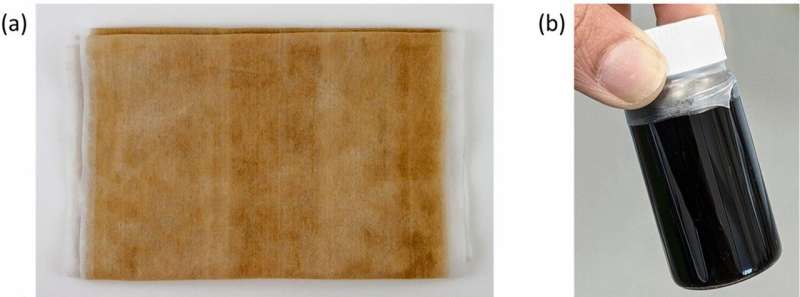Green chemistry transforms facemasks into Ethernet cables

Swansea University academics have pioneered a process that converts the carbon found in discarded facemasks to create high-quality single-walled carbon nanotubes (CNT) which were then used to make Ethernet cable with broadband quality.
The study, which has been published in Carbon Letters, outlines how this new green chemistry could be used to upcycle materials which would otherwise be thrown away and transform them into high value materials with real-world applications. The CNTs produced by this technique have the potential not only to be used in Ethernet cables, but also in the production of lightweight batteries used in electric cars and drones.
Professor Alvin Orbaek White, of Swansea University's Energy Safety Research Institute (ESRI), said, "Single-use facemasks are a real travesty for the recycling system as they create vast amounts of plastic waste—much of it ending up in our oceans. During the study, we established that the carbon inside the facemask can be used as a pretty good feedstock to make high-quality materials like CNTs.
"CNTs are highly sought-after because they have preferential physical properties and tend to be much more costly on an industrial scale. So, through this study, we demonstrated that we could make very high value materials by processing the CNTs from what are, essentially, worthless waste facemasks."
The team also studied the energy costs involved in using this process and concluded that the technique was green not only in levels of resource consumption but also in the product value generation as opposed to waste creation. Also, the Ethernet cable produced using the CNTs was good quality and adhered to Category 5 transmission speeds while easily exceeding the benchmarks set for broadband internet in most countries.
Professor Orbaek White said, "Using CNT films in batteries instead of metal films has a lower impact on the environment as the use of carbon offsets the need for mining and extraction activities. This is a crucial piece of work as it contributes to not only a circular economy but is also scalable and is viable for industrial processing and has green chemistry at its core."
More information: Varun Shenoy Gangoli et al, Upcycling of face masks to application-rich multi- and single-walled carbon nanotubes, Carbon Letters (2022). DOI: 10.1007/s42823-022-00398-8



















